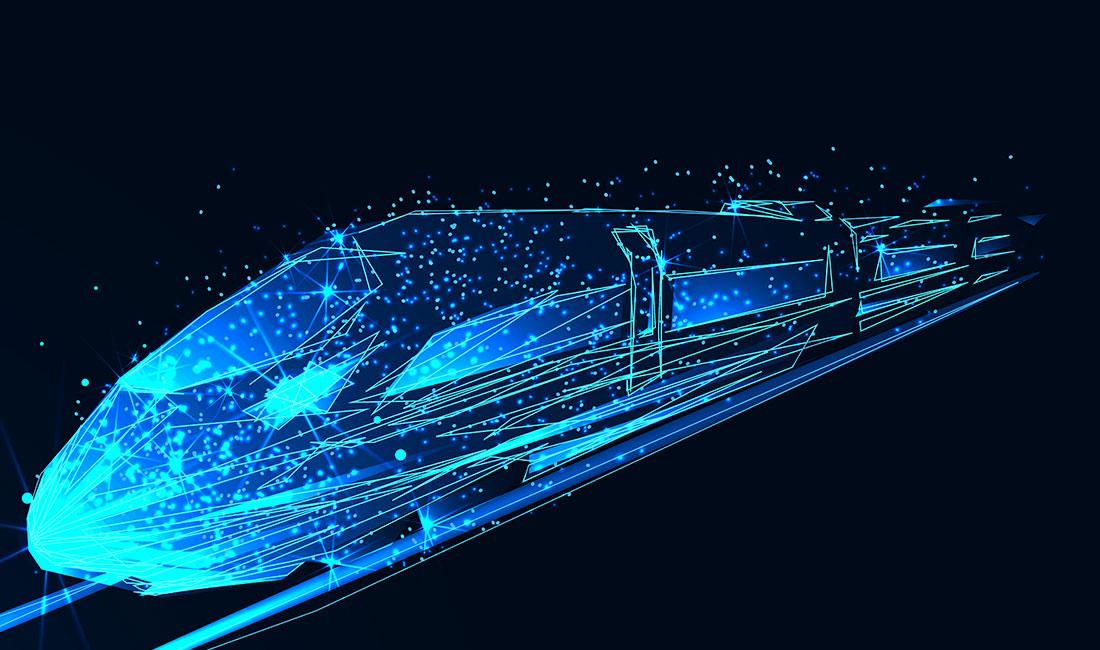Attention
This website is best viewed in portrait mode.
Transforming experiences with Digital Innovations in Railways

IoT for asset management and preventive maintenance in railways is a network connectivity landscape in the train, enabling the system to monitor and control the rail subsystems live, ranging from entertainment and infotainment to the powertrain of rail.
The global transportation industry is looking at creating a smart, seamless, and user-friendly movement of people and goods, and Rail transportation plays a vital part in this transformation. It will benefit from digital solutions innovations by applying technologies like Big data, Predictive maintenance, the Internet of trains, AI-integrated solutions, Virtual Reality, Artificial Intelligence, etc. The rail industry is looking forward to connected rail transportation that marks the next stage of the digital revolution where trains are never late, and train travel is cheaper, more convenient, safer & well connected.
Digitization will be a continuous process visibly marked by the emergence of industry 4.0 and railway 4.0, and digital railway. Passenger experiences, Mobile applications, e-ticketing, Automatic Train Supervision, Cybersecurity, Driverless Trains, and digital platforms for predictive maintenance are key digitalization areas in the rail sector.
Experience Visualization is a key area of digitization that enables the ability to visualize the product. This allows the Rail companies to make significant improvements before prototyping, boosting the overall product value that saves time and money. Rail OEMs & Operators can display their products with different configurations using Virtual Reality (VR). Helping leading train manufacturers with real-time configurators such as multiple combinations of the door, window options with various seating, and other interior combinations will help in showcasing their products with varying configurations in the Autodesk Vred VR environment.
Enabling the Connected Journey is another area in which the digital revolution helps. A travel planner application could recommend the fastest or most comfortable trip, station road conditions, live train timings, available parking facilities, passenger boarding, etc. This enables passengers to make informed decisions about what option will provide them with the best experience according to their circumstances, such as whether it is more relevant to have the shortest journey time or guaranteed a seat.
Connected mobility services offer predictable, convenient, accessible, affordable, environment-friendly, safe, and secure mobility. Obstacle detection & collision avoidance features in rolling stock digitally help the train driver to safeguard in many scenarios such as detecting objects, helping in driver blind areas, detecting objects on rails in mountain areas for collision avoidance, etc. The ability to prevent collision with objects can save costly repairs and prevents revenue loss due to the rail vehicle being out of service.
IoT for asset management and preventive maintenance in railways is a network connectivity landscape in the train, enabling the system to monitor and control the rail subsystems live, ranging from entertainment and infotainment to the powertrain of rail. Information concerning the categorization of faults can be analyzed across multiple assets, even various operators, to spot trends and identify preventative maintenance areas. A unified cloud-native approach will enable data and analytics synergies for the customer across product development, customer use cases, dealerships, allied businesses, and service networks, enabling innovations in customer experience, offerings, services, and business models.
While digitalization of the rail system yields unprecedented productivity gains and customer service improvements, enhanced connectivity is needed, and hence cyber risk exposure is very high. For critical networks such as signaling, train protection, and energy networks, such exposure to cyber risk is inappropriate. Any unauthorized changes to instructions, commands, or alarm thresholds could damage, disable, or shut down equipment, create environmental impacts, and/or endanger human life. What needs to be addressed is the cybersecurity scope across various levels – right from hardware & software of ECU to Gateways to Vehicle Networks and then to the IT network on the wayside.
In essence, digitization is vital to railways’ ability to evolve into an economically viable and environmentally sustainable mode of transport. Technology companies should invest in creating platforms, tools, or solutions to enable digitization while also developing and expanding internal capabilities to add value to customer’s digital rail programs.
Shaju S, General Manager, and Head - Transportation Business Unit at Tata Elxsi




